
MODERNIZING THE AIRBORNE
2
3
4

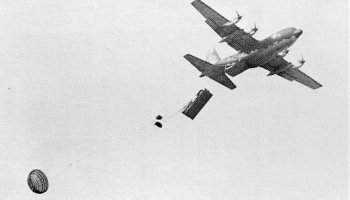


In the years preceding World War II, the combat triumvirate of the U.S. Army was composed primarily of foot-mobile infantry, towed artillery, and a handful of light tanks. The onset of hostilities, however, was the catalyst for a modernization effort that would dramatically change the organization, training, and equipment of U.S. ground forces. The Army transformed itself, from a force trained and equipped for the static nature of World War I, into one well adapted to the high-mobility demands of blitzkrieg.
The increased use of truck transport allowed the infantry to be moved about the battlefield much faster, although only when out of contact with the enemy. To overcome that problem, the thinly armored M3 "half-track" was developed, which provided improved cross-country ability and some degree of protection from small-arms fire, although its open-top design left it vulnerable to artillery air bursts. In the 1960s the creation of the M113 armored personnel carrier (APC) produced another leap ahead in mobility and protection, thanks to full-tracked, completely enclosed configuration. The battle exploits of the M113 are legendary and continue to the present. Two decades later, the adoption of the M2 Bradley Infantry Fighting Vehicles (IFV) gave the U.S. infantrymen even greater combat capability--but at a severe weight penalty.
The artillery branch evolved in a similar fashion over the past six decades, going from completely unprotected, towed artillery pieces to improvised mountings of howitzers on half-tracks and tank chassis, to purpose-built self-propelled guns such as the M109A6 Paladin. The tank force, which began with combat vehicles that were inadequately armored and woefully under gunned, now fields the best main battle tank (MBT) ever made --- the M1A2 Abrams, though at 70-tons too heavy to air-deliver in large numbers or by parachute.
The history of the Airborne stands in stark contrast to the progress of the infantry, artillery, and armor. When the 82nd Airborne Division was activated in 1942, it was made up primarily of foot-mobile infantry, with a few small-caliber, towed artillery pieces -- and no tanks. The 82nd has changed little since its inception half a century ago. It is still mainly a light infantry force, with a small number of towed howitzers for support; it also has some additional combat power in the form of TOW missile launchers mounted on HMMWVs (high-mobility multipurpose wheeled vehicles) and until recently a single battalion of M551A1 Sheridan light tanks. Essentially, the Paratroopers are stuck in World War II mode, while "leg" infantry is becoming a 21st Century force, having advanced from foot mobility to truck, then half-track, APC and IFV.
The traditional role of Paratroopers is to drop into the enemy's rear area, seize critical objectives, and hold on until relieved by conventional ground forces. This link-up must occur quickly to achieve mission success and Paratroop survival. A prime example of the inherent weakness of this strategy is Operation MARKET-GARDEN (September 1944), in which British and Polish Airborne forces were nearly annihilated by German Panzer units while attempting to capture and hold Arnhem bridge. Many Paratroopers were killed, wounded, or taken prisoner, in large part because they were outclassed in firepower, armor protection, and mobility: They couldn't run, they couldn't hide, they had precious little with which to fight, and the relief force failed to reach them after 9 days of what was supposed to be a 24 hour wait!
As a consequence of similarly bitter wartime experience--along with some thoughtful, far-sighted analysis--the Russian (formerly Soviet) General Staff eventually concluded that Airborne units must have the means to conduct operations without the need to link up with ground troops after possible nuclear assaults. Doing this meant giving the Paratroops roughly the same degree of tactical and technological advantage enjoyed by the heavy forces. The result was the introduction in 1970 of the BMD Airborne Combat Vehicle (ACV), which enabled the innovative creation of the world's first fully mechanized Airborne force.
Somewhat ironically, the parachute-deliverable M113 APC had entered production a decade earlier, when the U.S. Army realized the nuclear battlefield demanded light tracked armored personnel carriers a fact that would have permitted the modernization of U.S. Airborne forces ten years before their Russian counterparts, had Airborne visionaries like General James Gavin not retired before the U.S. 82nd Airborne had received some M113s.
Curiously, the interest--and the vision--has been lacking in this country. Instead of embracing mechanization as a means of expanding and enhancing their warfighting capability, the U.S. Airborne community seems to decry the concept stating two basic reasons: "There is not enough airlift" and "We can fight heavy forces successfully in all but the most open kinds of terrain, so why make a change that would rob us of our strategic mobility?" These issues are certainly serious enough to merit examination and analysis in an effort to determine their validity and provide possible alternatives.
Not enough airlift?
If this is true, the obvious answer is, "Get more!" If, however, politico-economic factors prohibit the acquisition of additional transport aircraft for this purpose, then what options are available that could be implemented with existing airlift assets? Just how many transports would actually be required to lift a mechanized Airborne force? Before answering these questions, it is first necessary to know the basic specifications of the Airborne Combat Vehicle.
THE VEHICLE
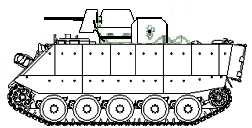
Although it would be desirable to develop a state-of-the-art ACV family--an Airborne combat system (ACS)--budget constraints would doubtless prevent it. Fortunately, a vehicle currently in service--the M113A3 APC (and certain of its variants) has most of the required characteristics:
First, with its small size and light weight, (11-tons, 22,128 pounds--the same as Army trucks) the M113A3 is capable of transport and low-velocity airdrop (LVAD or "heavy drop") by all four major U.S. Air Force cargo planes--the C-130, C-141, C-5 and C-17; it can also be carried a short distance as a sling load by the CH-47D helicopter. The only other full-tracked, armored vehicle now in the inventory that has the same LVAD capability is the M551A1 Sheridan tank. If the Sheridans of the 82nd's 3rd Battalion, 73rd Armor (originally slated to be replace by the now-defunctXM8 Armored Gun System) are withdrawn from service as planned, M113 variants will be the Army's only tracked armored combat vehicles with full LVAD capability.
The M113A3 is a vast improvement over the previous M113s. A more powerful but more fuel-efficient, turbo-charged engine and a new transmission deliver automotive performance on a par with that of the Bradley Fighting Vehicle. Internal Kevlar spall liners and external fuel tanks provide a great increase in crew survivability; mounting provisions for bolt-on armor packages make possible the upgrade of protection from the basic level (small arms,artillery fragments) to 14.5mm heavy machine gun, 30mm cannon, and rocket-propelled grenade (RPG) rounds.
In contrast, the TRACKED extended body M113A4, "MTVL" solution can get 4 vehicles in a C-17 (5 x M113A3s) vice 3 for any wheeled 9-man squad carrying variant. The MTVL can carry more than 9 men in the back, no need to remove canteens and other foolishness just to fit. When you can only put 8 or 9 Soldiers in a LAV-III what does that do with your load plan? What happens when you need to carry a medic or an FO? Now instead of 4 vehicles for your platoon, you need five and you need to wait for the second C-17 to land to have your whole team together. For the tactical deployment in C-130, we think it probable that the LAV-III must squat or remove external armament and sights just to get on the aircraft. There is a delay to reconfigure for combat upon arrival in AOR.
We know that the LAV-III with 14.5mm ceramic and the RPG armor solution bringing the vehicle to nearly 43,000 lbs, significantly exceeds the vehicle's design weight including the design weight of the tires. This exceeds the C-130's absolute weight limit of 42,000 pounds, exceeds the C-130 STOL rough field limit of 32,000 pounds and leaves no payload for the men!
Maybe some time in the future a C-130 transportable wheeled vehicle sized to carry a 9-man infantry squad can be developed to carry this HMG/RPG protective weight--but it is certainly not the LAV-III that is at Ft. Lewis today. Considering that the vehicles at Ft. Lewis do not have ANY add-on armor installed (7.62mm BALL protection only) and they are getting stuck in the gravel, an additional 6,000+ pounds of add-on armor is going to make it even worse.
In stark contrast, the more space/weight efficient TRACKED M113A3 in use by the IRF in USAEUR or the M113A4 MTVL can be given HMG/RPG resistant applique armor that is already Army-type classified. One type already available is called a P900 armor kit# 57K0467 to protect our Soldiers-on-point for America without affecting Air-Mech-Strike 3D transportability nor 2D mobility on the ground.
That all-wheeled BDE in WARFIGHTING is going to be severely handicapped and no amount of C4 ISR wizardry and cries for help; CAS, supporting arms, PGM are going to save it if it it rumbles down the road into a close-range massed RPG ambush and/or enemy tanks in a meeting engagements. How will its wheels hold up with bursting artillery landing all around it? LAV-infantry carriers, killed. LAV-AT, killed. LAV-AG, killed. LAV-RSTA, killed. All versions from the same "cookie cutter" easily killed because they have mobility equal or inferior to what the enemy has.
If the LAV wheeled armored car is so great, why DOES THE Mc Advanced Amphibious Assault Vehicle (AAAV) have TRACKS?
In contrast, the M113A3's tactical mobility is further enhanced by its ability to swim across small bodies of water with little or no preparation and BE ABLE TO ENTER/EXIT steep river banks without getting stuck.
While basic armament --a .50-caliber heavy machine gun--is rather minimal for modern warfare, the elegant simplicity of the M113A3's box-like structure makes it ideally suited to a "modular" approach to more powerful armament installations.

Weapons that can be mounted on the vehicle include the M2 .50-caliber Heavy Machine Gun (HMG), the Mk19 40mm Grenade Machine Gun (GMG), the M60/M240B 7.62mm Medium Machine Gun (MMG), the 30mm ASP-30 autocannon, the M40A2 106mm recoilless rifle, TOW, Follow-On To TOW (FOTT), Dragon, and Javelin AntiTank Guided Missiles (ATGMs), 81mm and 120mm mortars (in the M125 and M1064 mortar carrier variants). Even the Hellfire missile has been fired from from a modified M113 that was fitted with a prototype eight-shot turret assembly. With the exception of the multiple Hellfire launcher, the weapons listed can be mounted in various combinations according to mission needs. The following are some examples:
General Purpose/Urban Terrain
One GMG or HMG, on Javelin ATGM, two MMGs , and one LMG. Configuration allows maximum, continuous 360-degree observation and target engagement.
Direct-Fire Support (Version 1)
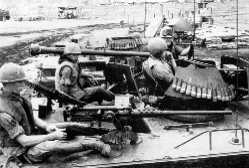
One 106mm recoilless rifle, one 40mm GMG, and one 7.62 MMG--a no-cost "armored gun system"
Direct-Fire Support (Version 2)

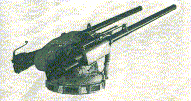
Two 106mm recoilless rifles, one .50-caliber HMG. Spanish TC-7/106 one-man turret would provide armor protection for the gunner.
Antitank
Incorporates a two-man turret similar to that on the French AMX-10 HOT vehicle, with four ready-to-fire ATGMs--TOW, TOW follow-on, or Javelin.
Indirect-Fire Support or Anti-tank:
M1064A3 self-propelled 120mm mortar has almost three times the lethality of 81mm mortar, six times that of 60mm mortar currently used by Airborne. 120mm precision-guided rounds would allow engagement of enemy armor at extended range (7,000+ meters) and in defilade.
AIRLIFT REQUIREMENT
In addition to the Paratroopers, an Airborne infantry battalion has 20 x TOW HMMWV 4x4 trucks, 36 x cargo HMMWV 4x4 trucks, and 10 x 2 1/2-ton FMTV 6x6 trucks. The artillery battery has 6 x HMMWV 4x4 trucks to serve as prime movers for the M119A1 105mm howitzers, the air defense platoon has 4 x HMMWV 4x4 trucks, and the engineer platoon has several pieces of heavy equipment mentioned would require about 54 x C-130s or 19 x C-17 sorties. An ACS battalion with, for instance, 45 x M113A3s, nine M1064A3 120mm heavy mortar carriers, and six scout HMMWV trucks would need 57 x C-130s or 19 x C-17s. If the Paratroopers were to "tailgate" the vehicles--jump from the same aircraft, immediately following the heavy drop load--the personnel aircraft would not be needed, thereby freeing eight to ten airlift sorties. A mechanized force might require slightly more (C-130s), the same amount (C-17), or even significantly fewer ("tailgating") aircraft for transport than does the current organization; this is quite contrary to the widely held belief that a mechanized Airborne unit would require "excessive airlift resources".
ORGANIZATION
Two organizational approaches seem worth considering. One of these is to follow conventional practice and mechanize each Battalion in all three Brigades. This route would cost more to implement and would place greater administrative, logistical, and maintenance demands on the units, but it would also permit all nine battalions to be mechanized at the same time.
This configuration would have been very appropriate in August 1990 when the entire 82nd Airborne Division deployed to Saudi Arabia. There, in a landscape without cover and concealment or shade from the sweltering summer sun--and facing a mobile, armored opponent--the foot-mobile Paratroopers could do no more than dig-in and hold on until the heavy forces arrived. Fortunately, although the Republican Guard T-72s may have been superior to the World War II German Panthers and Tigers, the Iraqi Soldiers displayed only a fraction of the competence--and none of the will to fight--that the Panzer crews showed at Arnhem, thereby avoiding a replay of that debacle.
Another factor to consider is the pending retirement of the M551A1 Sheridans. When the Sheridans are gone, the Paratroopers will not have an armored gun system that can be parachuted into the drop zone alongside them. In a mechanized Airborne force, however, some of the M113A3s could be equipped with recoilless rifles to provide organic direct-fire support; both the M40A2 106mm and the M3 84mm Ranger Anti-armor, Antipersonnel Weapon System (RAAWS) could be used in this role. Although the M40A2 has greater range and lethality, the M3 is light enough for easy dismounted use should the need arise. There are a few M40A2s still in storage at Anniston Army Depot (28 serviceable, as of this writing), but the 106 has been manufactured recently by Israeli Military Industries, and the 3A-HEAT-T round made by the firm of BOFORS reportedly has twice the penetration of the conventional 106 round and can defeat explosive reactive armor. These options are clearly less than ideal, but they are still far superior to hand-held weapons such as the LAW (Light Anti-armor Weapon) and the AT-4.
The other organizational approach is to have an autonomous ACS Brigade or designate a battalion in each of the 3 Ready Brigades within the 82nd Airborne Division functioning in much the same manner as the 3rd Battalion, 73rd Armor. Indeed, the armor battalion is probably the logical choice to serve as the nucleus of the proposed ACS Brigade. (This battalion could also initially serve as a battalion-size Airborne Experimental Force to test the concept in Advanced Warfighting Experiments or be the "muscle" for a newly created 2nd ACR "Strike force" at Fort Polk, LA.)
There would be a number of advantages to having a separate Brigade. The infantry battalions would not be saddled with the added maintenance and supply efforts required by organic light armor, nor would the Paratroopers lose their dismounted skills, because they would have the use of the M113A3s only for required training and maintenance and periodic operations.
This should not be viewed as simply an armored transportation Brigade, however. Even though it would function in that role for operations requiring mechanized infantry, it has the potential for employment in a variety of roles and missions.
In Desert Shield type of scenario, for example, the M113A3s could be configured as tank killers, with ATGM launchers installed for line-of-sight engagements, while M1064A3 120mm self-propelled mortars could have precision-guided mortar munitions for long-range and indirect-fire use. This configuration would need only four crewmen per M113, a substantial reduction in personnel requirements compared to the manpower-intensive infantry units. A single ACS Brigade could field as much anti-tank firepower as two Brigades of Parachute foot infantry--twice the combat power, with half the troops.
Class III supply (POL--petroleum, oil, lubricants) would be about as demanding as for those same infantry brigades' wheeled vehicles, but this should be mostly (if not completely) offset by the greatly reduced personnel requirements for Class I (food) and water, the latter being as critical as fuel in a desert environment. The need for items in Classes II, IV, VI and VIII should also be minimized because of the reduced number of Soldiers.
As for deployability, only 22 x C-5 sorties would be required to transport the Brigade's 170-plus armored vehicles. A force of armored, high-mobility, high-lethality weapon systems could maneuver according to the evolving situation--instead of just sitting and waiting behind a "line-in-the-sand" hoping the enemy would attack at the most favorable time and place.
During World War II, the available technology did not permit the mechanization of Parachute infantry. The workhorse of the air fleet--the legendary C-47--was not designed for parachute delivery of light armor; and the existing APC--the M3 half-track--was too big and heavy to be airdropped.
With the postwar development of the C-130 and other, larger transport aircraft, and the adoption of the aluminum-hulled M113, the technological aspects of the situation changed. Unfortunately, the U.S. Airborne community failed to take advantage of these new circumstances. Other nations have been more adaptive, however. Israeli Paratroopers readily incorporate the M113 into their operations, making full use of the vehicle's tactical mobility and armor protection. The German Airborne has recently added a mechanized antitank battalion--armed with the ultralight, helicopter-transportable Wiesel (TOW and 20mm cannon versions)--to its force structure. And, of course, the Russians have equipped several Airborne Divisions with BMD variants.
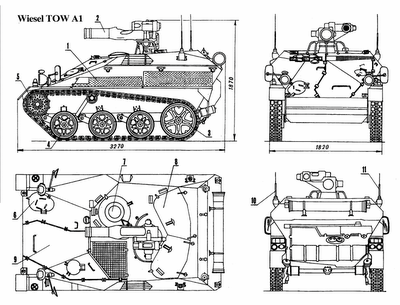
These countries have taken the lead in adding a new dimension to Airborne warfare. By combining the superior tactical potential of mechanization with the inherently unique advantages of vertical envelopment, they are creating parachute-deliverable forces capable of employment across the entire operational continuum. Since 1989 the U.S. Army has been downsized from 18 divisions to ten, and there is talk that end strength could be reduced even further. This smaller Army of the 21st Century cannot afford large, special-purpose units. Every Division needs to be equipped and trained to fight and win on all types of terrain, and across the entire spectrum of ground combat scenarios. If the 82nd Airborne Division is to become a full-spectrum force, it must mechanize; failure to do so is an open invitation to military obsolescence and battlefield defeat.
[Editor: This brilliant article cannot be refuted. I only add that as Major Kazmierski says in his thesis, Airborne forces need to drop AWAY FROM AIRFIELD air defenses using ACVs like the Russians do to attack from several unexpected directions to take airfields or other targets. In modern war, the decision is reached in 72 hours or less--you win, lose or draw with what you bring to the battlefield in the beginning, the initiative cannot be surrendered waiting for follow on forces to arrive by slow ships.
One of the false assumptions commonly held is that since the Bradley represents 1976 technology, its somehow better than the M113's 1963 or the M113A3's 1987. Technology is situation specific, not a time line. The M113 was designed to be light and completely terrain mobile to rumble anywhere in a post-nuclear strike battlefield or a totally rural, undeveloped Vietnam. The Bradley took the same technology and sacrificed mobility for armor protection since in the woods of Europe the latter was needed to survive an out-numbered fight against Soviet tank armies. But both vehicles have been updated with new technology, the M113A3s being built since 1987. The world we live in has changed: no more Soviet tank armies at the Fulda Gap; and it still has jungles and rivers and swamps (situations) where the M113A3 will prevail. The world we live in moves by the speed of the AIR and this means we can get more M113A3 Gavins per aircraft than we can M2 Bradleys. The best tool is the one designed to do the task at hand, not trying to make a one-type-fits-all "cookie-cutter". Those that label things by the year their first models/designs were made are ignorant of the battlefield realities that created the designs in the first place. They want to buy whatever is the newest, "sexy" or in vogue, not necessarily what works best. In war, what works best is best.]
FEEDBACK!
A veteran "Red Leg" Artillery Paratrooper writes:
"Dear Mike,
'I advocate M1064A3s 120mm mortars with an ulterior motive---to ground mount the 120mm mortars and free the carriers to transport infantry. The 120mm mortars can fire guided anti-armor projectiles and do indirect, high angle fire, good for MOUT/trenches etc."
Ah...I see...hehe. Well being of the fire support mind, more steel on target is a good thing.
Like I said....I am totally ignorant to the role of APCs and other 'Mech' type vehicles. I spent all my time in the 82nd so I didn't get to see much.
But, that being said...I did witness guys trying to rig-up 5 tons and 2.5's for air deployment. I always thought they were a little big for that. I know you are right about HQDA, and light divisions. We did a number of field exercises where we never even saw our HMMWVs. A towed artillery unit going 2 weeks with out a truck? We had to coordinate with the UH-60 troops for transpo. I mean it was cool if we did a 3 or 6 gun raid...but we needed them just to move from one firing position to another. And that pretty much would mean we would be dead in a RW engagement...no trucks to evac under fire(a task we had to perform for section evals anyway). We would have to sit under counter fire without being able to leave. So I see if they did assign the M113 or a like vehicle to the 82nd, it would spend more time in the motor pool than in the field. The doctrine would go something like this: "Once you have secured the DZ, your APCs will be brought in with follow on forces when they arrive, but in the mean time move out to your secondary objectives and we will call you when they get here"
If there is a vehicle in the current TO&E that would give Airborne and air-moble light infranty another combat capability, that meets there deployment requirements, it should be assigned. If that vehicle can be air-dropped, air-lifted, or slung under a shit-hook, then it should be used.
Maybe in company sized elements at first. If I remember right, the infantry battalions in the 82nd are cut up into 3 light inf. maneuver companies, and 1 anti-tank (turtle hummer with TOW) company. Make the new battalion line of march to be 2 light inf. maneuver companies, 1 armored/mech company, and 1 anti-tank company (mix platoons of armored and HMMWV). I am not an expert but that would give the battalion task force something to breech strong defensive positions. And with the addition of a platoon or company sized element of light armor, every thing could be done in house, which gives the division more punch in that 72 hour period (which is longer cause it will take more than that to alert and move any division sized heavy elements to the theatre). Once the vehicle has proven its usefulness, then the Divsion command staff can make the final decision on wether or not to implement it through out the battalion task force or not.
Which brings me to another beef. The largest manuever element in the current doctrine is the Division right? If that is so, how can someone on "the hill" make a decision on what the division or brigade needs to accomplish its mission. That is like telling you what kind of things you need in YOUR car.
Oh..I know that DA hates the Airborne. The Officer Corps wants to have the wings...but doesn't want the work. My graduating jump school class was almost 600 strong. Of that 600 less than 100 ended up doing time as a Airborne assignment. The other 500 went back to leg business as usual. And the officers just went back to the career track. I don't think everyone needs to be Airborne. I think between the 1 division, and 2 seperate task forces we have, that the mission is there. The mission is the issue. Not the Airborne. All units have a mission statement. That takes us back to the inferiority issue. There isn't a damn thing we can do to change their minds.
They keep the Airborne/Special community locked up in the kennel and only pull them out when the more conventional elements are either incapable or unwilling to perform the mission. They pat them on the head and say 'good job' but get back in the cage.
Yet, look at the last 3 Chairmen of the Joint Chiefs. 2 were from the Airborne community, the other was a ticket puncher. So, obviously the Airborne community is either what you want for leadership, or something to get a ticket punched on your way up. For someone to hate that community is simply ridiculous. Their very actions tell us that they can't live without them....maybe that is why they don't like them."
RETURN TO AIRBORNE WARFARE CONTENTS PAGE